Should I Replace My Roof? Here’s What to Consider
Updated: Apr. 22, 2024
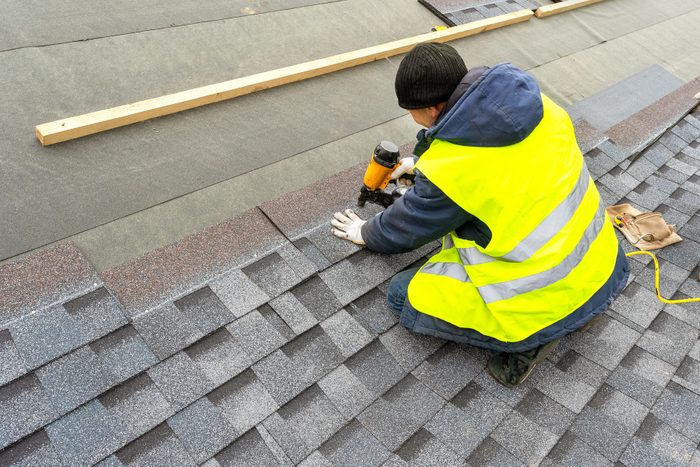
A roof replacement is an expensive proposition, and you might not need one. Here's how to tell when a less expensive repair will solve your problem.
A roof over your head is synonymous with shelter. While roofs last a long time, they don’t last forever. Replacing a roof is a big deal, costing between $8,500 and $25,000, with an average cost of $10,000 nationally. So when you can avoid a full replacement with a relatively simpler repair, that’s usually the more practical approach — but that’s not always possible.
“A few damaged shingles can be repaired, but how many damaged shingles does it take to consider replacement?” asks Korey Gregory of Arizona-based ASAP Restoration. His answer: “When the amount of work and the cost of fixing damaged shingles starts to approach the cost for a total roof replacement, then it’s probably a better idea to do the latter. Besides, if the shingles are in that bad a state of disrepair, then odds are strong other issues need to be addressed, too.”
Extensive shingle damage is one sign of the need for replacement, but not the only one. “A sagging roof will require extensive repair in the best case and a roof replacement in the worst case,” advises Niki O’Brien, Operations Manager for Custom Exteriors in Denver. “It can be caused by water damage, excessive weight, a poorly designed structure, or age.”
If you’re trying to decide whether to repair your damaged roof or replace it, you’ve probably got some questions. Our experts provide some answers here.
On This Page
Assessing Shingle Damage
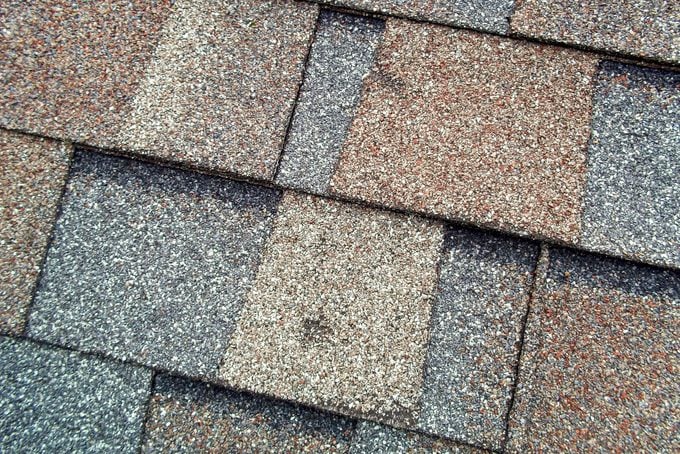
Sitting on top of the roof, shingles suffer damage from exposure to elements such as wind, hail, mold, heat, and age. I’ve replaced my share of damaged shingles, but a point comes when repairs don’t cut it. Homeowners can decide when that point has arrived, but sometimes, laws do it for them.
“The criteria for a roof replacement, particularly the number of missing shingles, are subject to local jurisdiction and insurance coverage,” advises O’Brien. “For instance, some local jurisdictions mandate a total replacement if a certain amount of shingles (usually one square = 100 square feet) is deemed damaged.”
According to Mike Powell, a certified home inspector in Florida, “Florida statutes require that if the damage is confined and not widespread, repairs might suffice. However, if the damage to the shingles extends beyond a certain threshold, which is currently pegged at 25%, then replacement is required.”
So, what constitutes shingle damage? Here’s a list:
- Cracking: Shingles crack under exposure to extreme temperature fluctuations, and water can seep through the cracks.
- Wind Damage: High winds can lift shingles and even blow them off the roof. When a strong wind lifts a shingle, it may pry the nails holding it loose, and each nail hole is a potential leak. Moreover, high winds can compromise the sealant holding the shingles down, increasing the likelihood of flapping and tearing during a subsequent wind event.
- Missing granules: Asphalt shingles have a top layer of crushed stone that helps reflect sunlight and protect them from deterioration. Aided by strong winds, snow and hail, the granules eventually fall off, and the roof gets hotter on hot days, accelerating the deterioration of the shingles.
- Hail Damage: “In Colorado, hail damage is the primary cause of roof replacement,” says O’Brien. Hail knocks off granules, causes cracking and makes holes that can cause leaks.
- Curling: You usually only see curled shingles on older roofs. The curling can be caused by loss of granules or excessive heat caused by poor attic ventilation, but the most common cause is mold growth. Needless to say, curled shingles need replacement.
- Mold: Mold tends to accumulate on shady roofs, and if left unchecked, it causes discoloration and significant shingle damage. The best prevention is to clean it regularly. Here’s how.
The Impact of Ice Dams
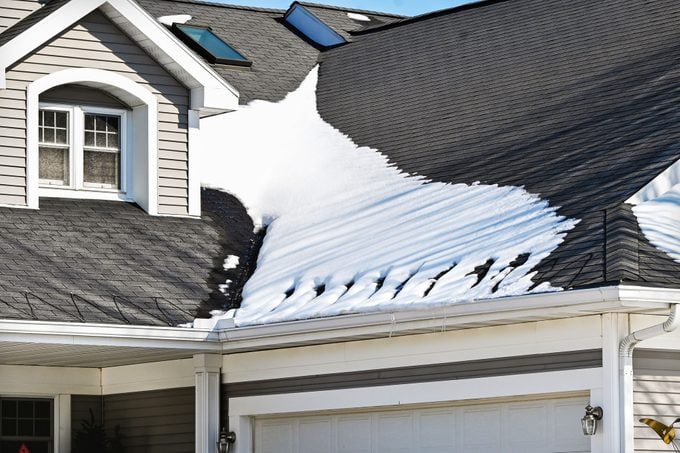
Ice dams occur when the roof is warm enough to melt the bottom layer of accumulated snow during the day but not warm enough to prevent it from freezing again at night. The causes are insufficient attic ventilation and clogged gutters. As more and more snow accumulates, the sheer weight, together with the ice melt, can wreak havoc on the roof, but it isn’t necessarily a reason to replace it.
O’Brien states flatly that ice damming is usually not a cause for roof replacement, but Gregory points out that the damage over the years is cumulative. “To determine if one ice dam is too many completely depends on how well the roof survived the event,” he says. “If the roof layers didn’t begin to delaminate, then it might be safe for another season.”
Bottom line? “If you don’t see mold growing down your walls inside where the dam occurred, your ice dam may not have damaged anything,” says Gregory. “But you should still get a professional to inspect the attic and roof to make sure. Having an ice dam should also serve as a warning that your gutters need to be cleaned.”
Flashing Issues
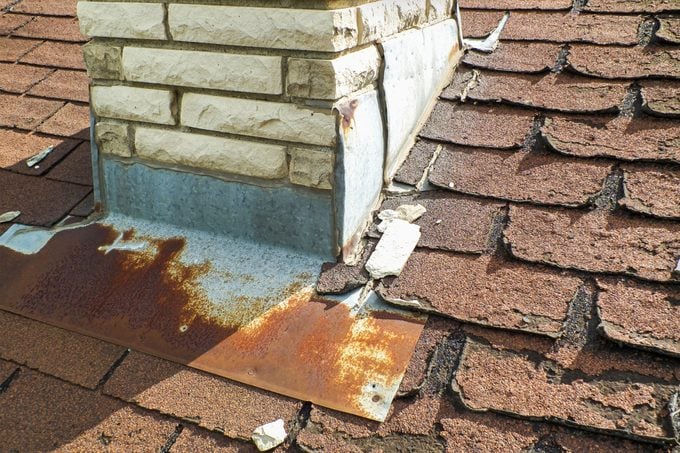
A typical roof has many different kinds of flashing, and it’s there to protect the decking from water damage. The different types include:
- Drip edge covers the lowest edge of the roof at the eaves.
- Vent flashing surrounds plumbing, air and gas vents.
- Dormer and chimney flashing include step flashing along the sloped sides and solid flashing along the bottom edge.
- Valley flashing carries water along stretches where two sloped roof sections meet.
Flashing can rust, deteriorate or get pushed out of place over time by high winds, ice dams and movements of the shingles. You can usually repair or replace damaged flashings without replacing the roof, sometimes even by applying a sealant. However, if the decking underneath has rotted, you have to replace it, which calls for replacing at least part of the roof — if not the whole thing.
The Roof Is Sagging
If you notice your roof forming valleys between the rafters, your roof is sagging, and it isn’t a problem to ignore. “Sagging rooflines mean that the underlayment, the trusses, or the joists are beginning to fail,” warns Gregory. “This is a warning from the roof that a collapse is not long off, so immediate action is the best approach to avoid even more destruction and keep everyone safe.”
The remedy? “A sagging roof will require extensive repair in the best case and a roof replacement in the worst case,” says O’Brien.
FAQs
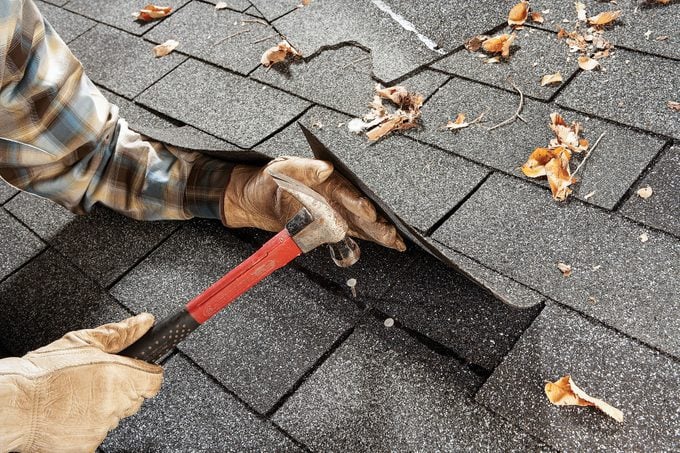
How much does it cost to replace a roof?
Depending on the size and complexity of your roof and the local cost of labor, a complete roof replacement for a shingle roof costs from $8,000 to $25,000.
Can a DIYer tackle a roof repair?
Yes, but don’t risk it if your roof is too steep. Pros consider a pitch more than 8/12 (eight inches rise per foot of horizontal run) unsafe for walking, but I draw the line at 6/12 since I’ve fallen once and don’t want to do it again.
What should you do if you have an active leak in your roof?
Roof leaks can be extremely difficult to pinpoint since water tends to seep along the decking and drip far from the location of the actual leak. Sometimes, the leak is obvious, though; when it is, you can plug it with roof sealant. When you can’t find the leak, and you need to call a pro, cover items in the house to keep them dry, relieve pressure in the ceiling where the leak is causing bulging and cover the general roof area where you suspect the leak to be with a tarp held down by weights.
About the Experts
- Korey Gregory is a licensed contractor and the Construction Superintendent for ASAP Restoration, LLC, based in the Phoenix, AZ, area. Before joining ASAP Restoration, Korey owned his own successful company, KG Custom Interiors, in Washington.
- Niki O’Brien is the Operations Manager for Custom Exteriors LLC, a roofing company based in the Denver, CO, area. The company is part of the Colorado Roofing Association, which aims to help homeowners make informed decisions about replacing and maintaining their roof systems.
- Mike Powell is a professional engineer, certified home inspector, and owner/trainer at Red Flag Home Inspection, based in Tampa, Florida. He has been a forensic engineer (engineer determining cause and origin of failure) for Buildings and/or Building components for over 20 years, mostly in residential settings.
